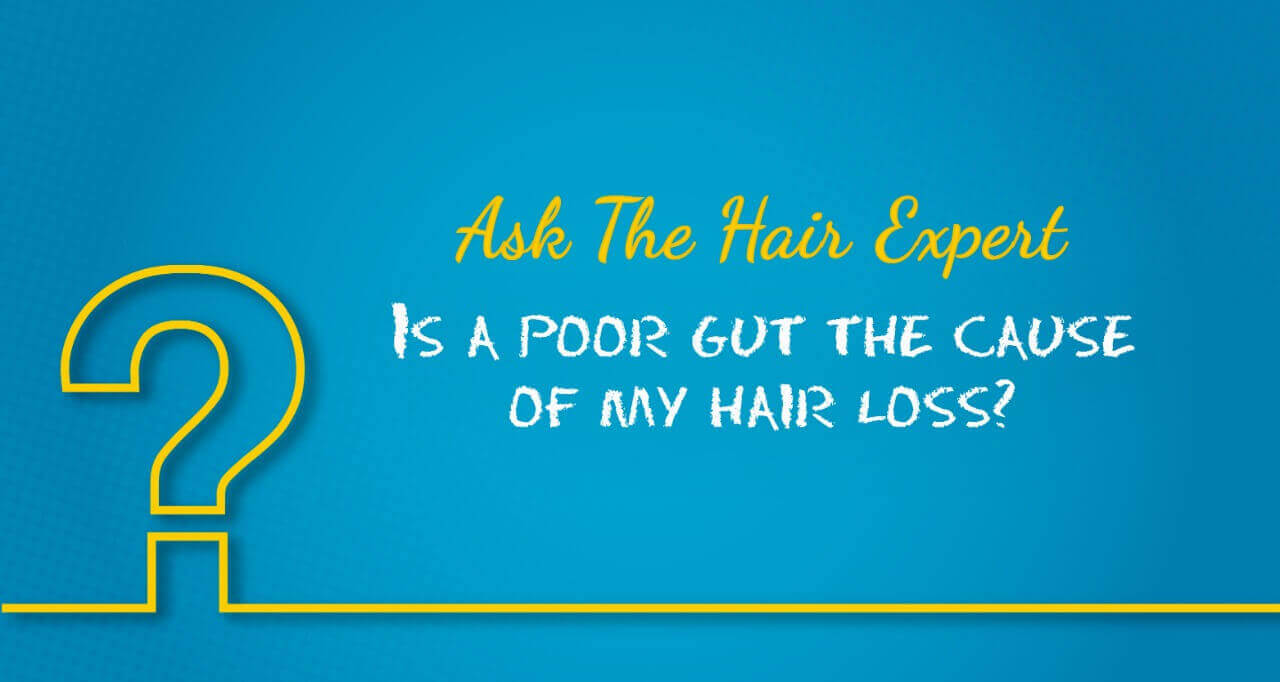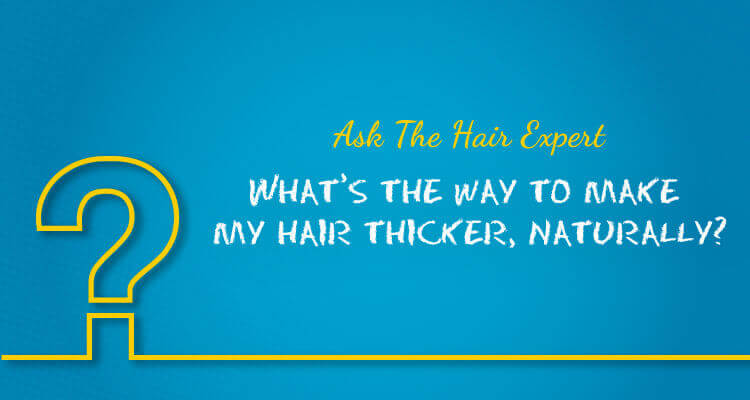Here is an intriguing question! This is perhaps one of the most common hair & scalp problems faced by many but most have no clue what the root cause is and needless to say, how to tackle it. Well, how do you solve a problem unless you acknowledge that there is one in the first place?!
So here we are, again, with the ‘Ask the Hair Expert’ series, to give you some answers and clarity.
You asked: ‘Can a hairstyle actually cause hair loss? Are my high & tight ponytails and buns affecting my hairline?! What is Traction Alopecia?’
Here’s the answer from the Hair Experts.
YES! Certain hairstyles can INDEED be a cause of concern.
Get to the root of the problem with the help of a Trichologist!
Let’s first understand what the concern here actually is, what Traction Alopecia is, what the common causes and symptoms are, and then, move on to how it can be tackled. We will also look at solutions you can opt for if you are already struggling with the condition.
What is Traction Alopecia?
Traction Alopecia refers to physical damage caused to the hair, in both adults and children, from the repeated pulling of hair. It causes inflammation, eventually leading to hair loss.
The alopecia or hair loss that occurs in Traction Alopecia can be both the scarring (cicatricial) and non-scarring alopecia depending on whether it is early and reversible, or late and permanent. Scarring Alopecia is a type of baldness caused by the destruction of hair follicles.
If the early stages of non-scarring alopecia are ignored it can result in scarring alopecia where the hair growth is no longer possible.
Hair loss from Traction Alopecia is more commonly seen on the frontal or temporal scalp as this is the area of the scalp that receives maximum tension in tight hairstyles. However, other sites of the scalp can also be affected. Although it is not a health concern, hair loss occurring on most visible parts of the scalp such as frontal hairline or crown is very embarrassing. This is the reason why this condition can cause psychological distress.
What are the causes & symptoms?
Human hair is fragile and does not respond well to the many physical and chemical assaults it has to endure in the name of beauty. Constant teasing, fluffing, combing, washing, curling, blow-drying, hot combing, straightening and bleaching can play havoc with hair and cause hair loss.
Hair trends are not always hair-health-friendly! Hair, especially those by the hairline and along the front and sides, are particularly vulnerable to damage and breakage. Styles that apply tension to the hair, such as tight ponytails, braiding, barrettes and permanent waving, can damage the hair.
Treating your hair roughly, tying it too tight, pulling it back into tight ponytails, tight stressful braids, tight high top buns…all of this can cause severe damage to your hair and scalp. These may cause breakage and tear of the hair shaft (part of hair coming beyond the surface of the skin). All this can lead to traction alopecia, which most people do not even recognise as it sets in!
Some usual symptoms of the condition are:
- a receding hairline usually noticed around the temples, forehead or nape of the neck.
- redness, scalp irritation such as itching or burning/stinging sensation, ulcers on the scalp.
- tiny pimple-like eruptions on the scalp or at the base of braids/ near hair roots
- widening of the hair partition area
- thinning of hair or breakage noticed where there is maximum strain
- visible scarring in advanced cases
List of common causes:
- Particular hairstyles – as mentioned above, braids, tight ponytails, twisted tight buns, dreadlocks, cornrows…
- Heavy hair extensions and wigs – when these are used with inappropriate or low-quality accessories, they can cause tension on the follicles. It would be preferable to go for customised hair systems from reputed clinics, under the supervision of a trichologist instead.
- Headwear that pull hair – as mentioned above, helmets, turbans, caps, elastic bands worn the same way every day, like people in active sports.
- Hair accessories – clips, pins, when used extensively and inappropriately can strain the hair roots to a great extent.
- Exceptionally long hair – the weight of the long hair can sometimes lead to a strain on the roots, especially when worn in tight hairstyles
- Repeated use of hot combs or rollers for hair styling
- Excessive use of hair relaxers or chemicals used to straighten hair
Who does it affect?
It can affect anyone irrespective of gender or age. The condition has been noted in children too. We generally tend to pull back hair and braid tight for school children. This causes a lot of strain on the follicles. Young adults tend to indulge much in fashion trends.
It can also occur when tight headwear is used in the same way every day. The condition is fairly common among ballet dancers and other sports professionals who wear pulled back tight buns or ponytails and were tight caps/headwear for long periods of time. Gymnasts, military personnel and certain professionals who need to wear their hair pulled back regularly may also develop Traction Alopecia.
The epidemiological studies have noted that the prevalence of Traction Alopecia is more common among women and children of African descent. Studies also suggest that the incidence of Traction Alopecia is more common in women and children than the men of the African race. It is also common in Sikh men with tight knots beneath their turbans. Also, the prevalence increases with increasing age as the hair follicles get weaker and more prone to damage by external pulling or force.
Frequent abuse of hair through damaging hairstyles can instigate male or female pattern thinning or baldness.
Caught early, this condition is fully reversible and the hair can regrow. Over time, however, hair follicles can become irreversibly damaged so that the hair does not regrow. Repeated strain on the hair follicles can pull out strands of hair and even damage the follicles. This causes redness, itching, and even pus-producing ulcers or infections.
Can Traction Alopecia be cured?
The treatment for traction alopecia is rather simple. Hair has to be handled gently and as little as possible. The best solution would be to wear your hair comfortably using natural hairstyles. The hair will usually return to its normal volume, but the regrowth pace can be slow. Injured hair follicles do not heal quickly and often take 3 or more months to get back to their growth phase. Visiting a trichologist can help in assisting this process the right way. You may be prescribed anti-inflammatory agents to reduce redness and itching, or antibiotics to reduce the infection.
For those who have an irreversible condition, again, a trichologist can help with a suitable solution. The hair expert will examine the condition of the hair and scalp, understand your lifestyle and daily routine (this becomes very crucial for instances where this condition is triggered by a profession. Eg: sports professionals), and your medical history. After drawing a careful diagnosis, the trichologist can guide on way forward.
Surgical hair transplant, and non-surgical hair systems customised to tailor-fit you, can be good options if the condition is irreversible.
How can it be prevented?
The key to avoiding Traction Alopecia is to follow good hairstyling habits. Some surefire ways of avoiding the condition are as below.
- Avoid tight hairstyles – as explained above, this leads to strain on your hair roots
- Avoid excessive use of hair styling products – these cause damage to your hair shaft and aggravate the damage
- Keep changing your hairstyles, partitioning – wear hair comfortably and keep changing styles to ensure there is no specific strain on the hair roots
- Use hair accessories only if unavoidable – accessories can pull hair and damage them
- Avoid using hot rollers and irons on your hair – these damage the cuticle and strain the follicles
- Use satin or silk pillow covers – they cause minimum friction
- Use the right Hair Systems – using wigs that are not porous, not skin-friendly, attached with inappropriate accessories can cause great damage to hair and scalp.
- Promote hair growth with the help of a trichologist’s advice. This could be a simple change to your hair care regimen, hair supplements or treatments that stimulate hair growth.
With changes in hairstyling habits, giving up tight hairstyles, and taking hair growth-promoting agents such as minoxidil, under the guidance of a trichologist, hair loss in Traction Alopecia can be recovered in 6 to 9 months.
Trust we have answered your questions and clarified on all related aspects of Traction Alopecia! If you wish for any further details or clarifications, you know where to reach us! Our experts are just a call away.
Remember, each individual’s hair and scalp condition is different from the other. One solution doesn’t fit all! While one remedy may work for your friend, it may not quite do the needful for you!
Hence, a gentle reminder – If you ever notice worrying changes in your hair, such as persistent hair loss, itchy scalp, and split ends or no growth, contact a trichologist immediately. Don’t postpone or hesitate. You may be too fashionable for your hair’s liking!
For more on hair & scalp concerns, and for all things ‘Hair’, do follow our blogs on hair loss, hair care, treatments and solutions and interesting hair trivia!
Connect with us on social media on the links below. Do leave your questions & comments and we will address them all, just as we have done today!



